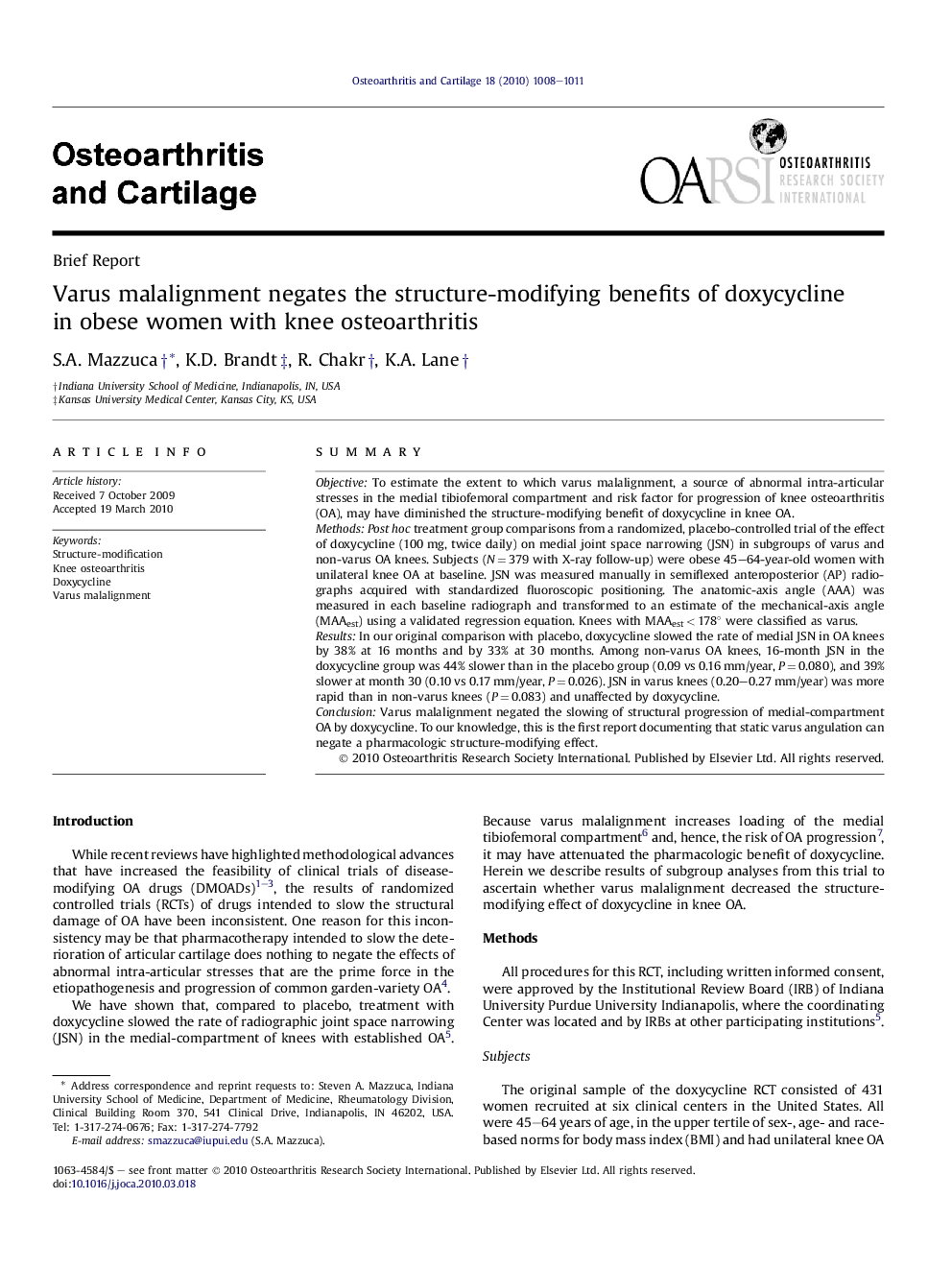| Article ID | Journal | Published Year | Pages | File Type |
|---|---|---|---|---|
| 3380274 | Osteoarthritis and Cartilage | 2010 | 4 Pages |
SummaryObjectiveTo estimate the extent to which varus malalignment, a source of abnormal intra-articular stresses in the medial tibiofemoral compartment and risk factor for progression of knee osteoarthritis (OA), may have diminished the structure-modifying benefit of doxycycline in knee OA.MethodsPost hoc treatment group comparisons from a randomized, placebo-controlled trial of the effect of doxycycline (100 mg, twice daily) on medial joint space narrowing (JSN) in subgroups of varus and non-varus OA knees. Subjects (N = 379 with X-ray follow-up) were obese 45–64-year-old women with unilateral knee OA at baseline. JSN was measured manually in semiflexed anteroposterior (AP) radiographs acquired with standardized fluoroscopic positioning. The anatomic-axis angle (AAA) was measured in each baseline radiograph and transformed to an estimate of the mechanical-axis angle (MAAest) using a validated regression equation. Knees with MAAest < 178° were classified as varus.ResultsIn our original comparison with placebo, doxycycline slowed the rate of medial JSN in OA knees by 38% at 16 months and by 33% at 30 months. Among non-varus OA knees, 16-month JSN in the doxycycline group was 44% slower than in the placebo group (0.09 vs 0.16 mm/year, P = 0.080), and 39% slower at month 30 (0.10 vs 0.17 mm/year, P = 0.026). JSN in varus knees (0.20–0.27 mm/year) was more rapid than in non-varus knees (P = 0.083) and unaffected by doxycycline.ConclusionVarus malalignment negated the slowing of structural progression of medial-compartment OA by doxycycline. To our knowledge, this is the first report documenting that static varus angulation can negate a pharmacologic structure-modifying effect.
